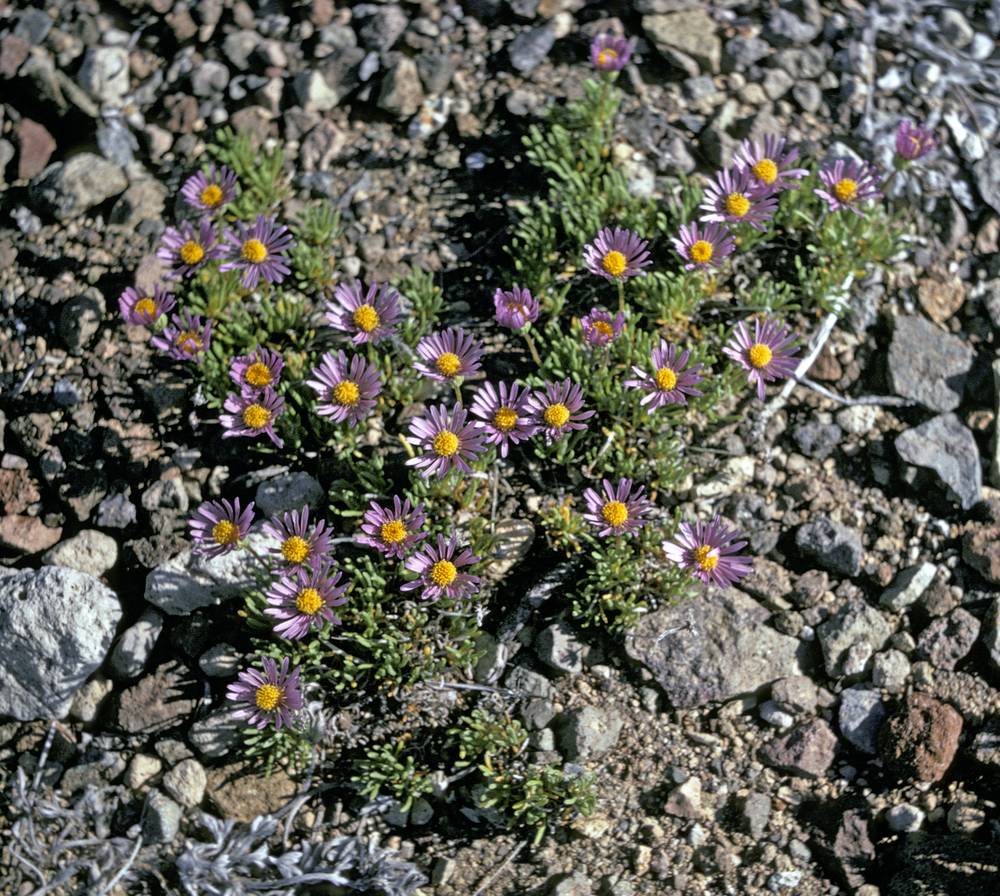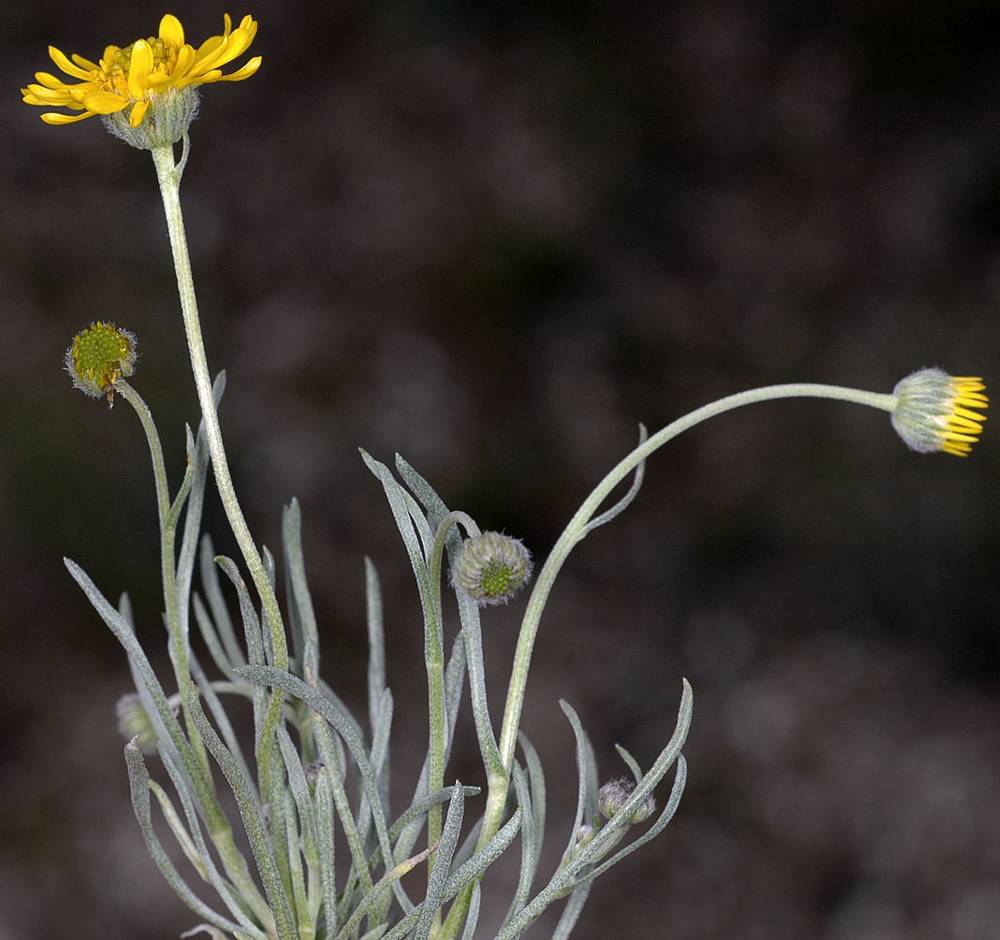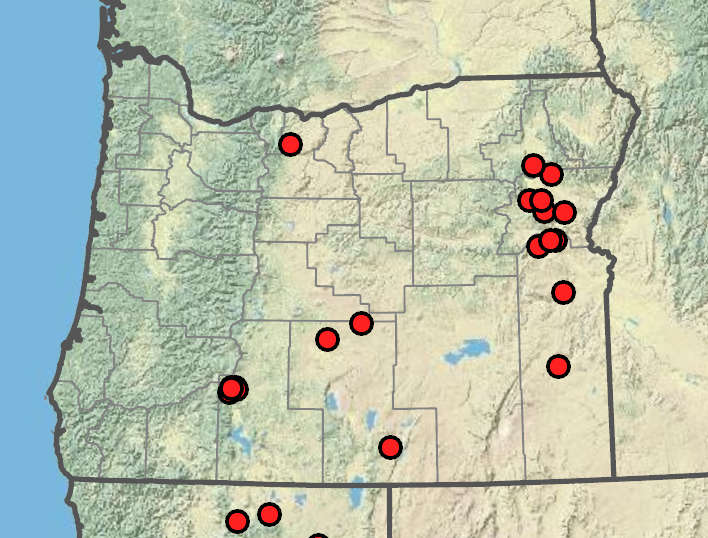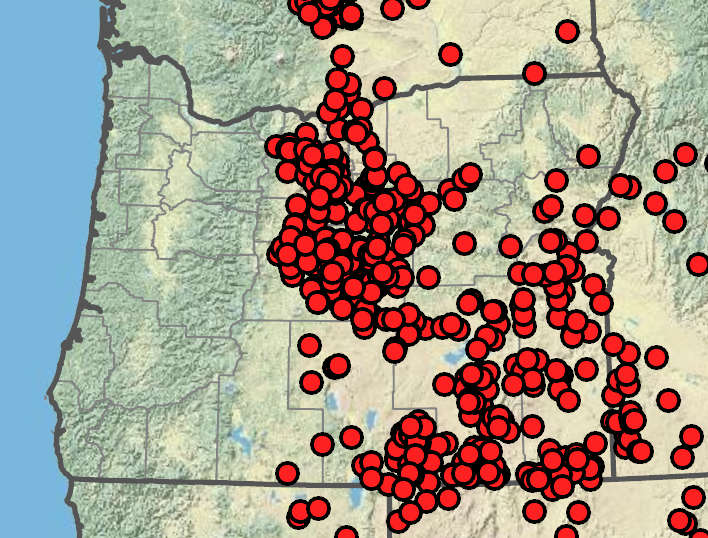Erigeron elegantulus
Erigeron linearis
dwarf blue fleabane, volcanic fleabane
desert yellow fleabane, lineleaf fleabane
erect to basally ascending, sparsely to moderately strigose, eglandular.
erect or basally ascending, moderately to densely strigose, eglandular.
persistent, linear to filiform, 20–50 × 0.5–1 mm, white, bases sheathing;
margins entire;
tips round to acute or acuminate;
surfaces sparsely to moderately strigose.
persistent, linear to very narrowly oblanceolate, 15–80 × 0.5–2 mm, bases sheathing and light- or white-colored;
margins entire;
surfaces moderately to densely strigose, eglandular.
abruptly reduced and usually restricted to basal ? of stem, bases sheathing.
linear, 5–20 × 0.5–1 mm, usually reduced distally, bases sheathing.
3–5 × 8–11 mm.
5–8 × 9–13 mm.
15–30, lavender to purple;
rays 3–8 × 0.7–1.3 mm.
20–40, bright yellow;
rays 5–7 × 1–2 mm.
corollas 2.5–3.5 mm.
corollas 3–5 mm.
in 3–4 unequal series;
surfaces sparsely strigose, eglandular.
in 2–3 series;
surfaces moderately to densely strigose; hirsute, or manicate, minutely glandular.
1–2 mm, nearly glabrous to sparsely strigose;
inner pappi of numerous barbellate bristles.
2–3 mm, sparsely strigose;
inner pappi of numerous barbellate bristles.
1, radiate.
1(2), radiate.
=27.
=18, 27, 36, 45.
Erigeron elegantulus
Erigeron linearis
Rocky areas, sagebrush, coniferous forests. Flowering Jun–Aug. 700–2500 m. BR, BW, Casc, Owy. CA. Native.
Rocky areas, sagebrush, juniper forests. Flowering May–Jul. 200–2500 m. BR, BW, Col, ECas, Lava, Owy. CA, ID, NV, WA; north to British Columbia, northeast to MT, east to WY, southeast to UT. Native.
James Riser, Stephen Meyers
James Riser, Stephen Meyers
- Local floras:
BC,
CA,
OR,
WA
- Local Web sites:
CalFlora,
CalPhotos,
Flora NW,
PNW Herbaria,
Turner Photog.
WildflowerSearch
iNaturalist (observations)
USDA Plants Database
- LBJ Wildflower Center
- SEINet
- Plants of the World Online
- Encyclopedia of Life
- Wikipedia
- Google Image Search





